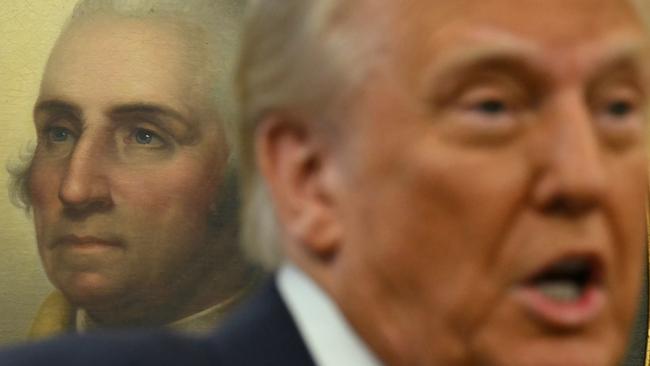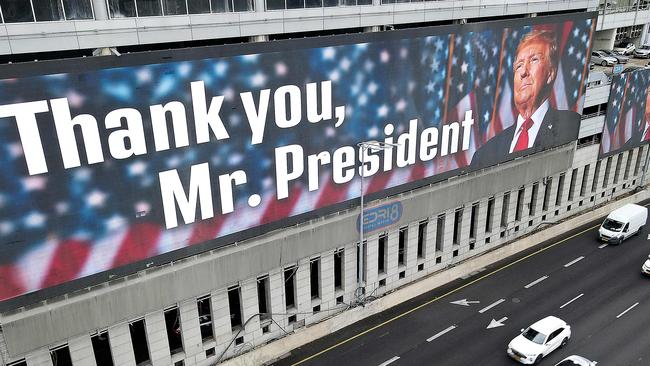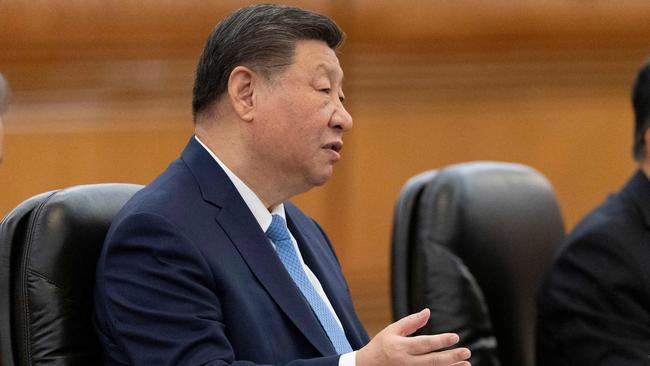All change as President Trump rewrites the rules of geopolitics

Not so Donald Trump. We now have enough evidence to see he holds a very different geopolitical perspective to those of his 13 presidential predecessors since FDR.
This will have serious implications for the US role in the world and will force uncomfortable choices on many countries, not least Australia.
Geopolitics is a framework for understanding and responding to a country’s advantages and vulnerabilities as determined by geography and national power.
American presidents since FDR have adopted broadly the same geopolitical understanding of US advantages and vulnerabilities, and the resulting imperatives of how the US should act in the world.
Forged by the experience of World War II, developments in military technology, and the writings of geopolitical theorists such as Alfred Thayer Mahan, Halford Mackinder and Niklaus Spykman, FDR and his successors believed America’s continental isolation no longer guaranteed US security and prosperity.
The rise of a powerful rival in Eurasia, they believed, would ultimately threaten the US. America, therefore, had to be active and engaged globally: providing security, access to technology and markets, building and maintaining international institutions and international law, to forestall the rise of a peer competitor.

Trump’s geopolitical framing is radically different. It sees America’s isolation behind the world’s two largest oceans, with relatively weak neighbours to its north and south, as an overwhelming geopolitical advantage.
So too are America’s size, wealth, resources and technological creativity.
For Trump, his 13 predecessors have compromised and squandered geopolitical advantages by being too active in the world. America’s crusades abroad, as much as its openness to damaging, corrupting and weakening inflows of goods and people and outflows of industry and jobs, have weakened America’s geopolitical advantages. It is a geopolitical vision that harks back to Thomas Jefferson’ and the pre-World War II isolationists.
Part of Trump’s plan for securing Fortress America are the tariffs that will slow and end the weakening inflows of foreign-made goods and the outflows of American manufacturing jobs. He sees Greenland and the Panama Canal as potential breaches in the walls of Fortress America, so he wants to control those. US commitments need to be drastically scaled back. Article 5 of the NATO Treaty, which commits all members to the defence of any member, is anathema to Trump. His proposals for Gaza’s reconstruction, for ending the war in Ukraine, for building ties between Israel and the Arab world, and in his first term for a deal with North Korea, should not be read as nascent internationalism.
They are troubleshooting; fixing problems prior to a withdrawal of US interest and commitment.
The rest of the world, in Trump’s geopolitical framing, needs to get on and manage its own stability and prosperity without any expectations of a US contribution.

Trump’s geopolitics will see the replacement of an extensive, extroverted American foreign policy that seeks to shape the world in America’s interest with an intensive, introspective foreign policy that seeks to defend and build America’s own strengths. Every commitment, every response to a provocation will be scrutinised for whether it strengthens or weakens Fortress America. The sudden demise of USAID speaks to a geopolitical vision that no longer cares about whether the rest of the world broadly reflects and supports US interests and visions of international order.
Indeed it is a geopolitics that questions even the notion of an international order. The consequences of Trump’s geopolitical framing for the rest of the world shouldn’t be underestimated. It immediately affects the emerging confrontation between the coalition of advanced internationalist democracies and its authoritarian opponents – China, Russia, Iran and North Korea.
It will potentially provide a much greater advantage to China in building support and leadership in the global “South”, allowing Beijing to speak on behalf of and create partnerships in the developing world.
Many governments in Africa, Asia, the Pacific and Latin America will see Trump’s ascendancy as signs of a collapse in the democratic West’s legitimacy, power and confidence, and conclude that China’s offerings are now the most compelling game in town.
Indeed, Beijing and Moscow may even begin to see opportunities to detach less committed members of the liberal democratic coalition, such as Hungary, to bring them into their own support base.
It will be a world much more conducive to Russia and Iran, both seriously weakened by the collapse of the Assad regime in Syria, allowing them to rebuild their influence in the Middle East.
The space in which Iran can complete its march towards nuclear warheads could well open up.

North Korea, having flexed its authoritarian internationalism in Ukraine, may well be looking for other avenues to sow discord.
US allies, all of which have developed their own geopolitical framings around America’s, face some acute and consequential choices.
For decades most have taken it as a self-evident truth that the more extensive global adherence to liberal, democratic, free-market, rule-of-law norms, the more stable and prosperous the world will be, as will individual nations.
Now Europe, Japan, Britain, Canada, Australia, South Korea and New Zealand face a choice: do they continue to work collectively to advance this ideal without the US, or do they seek more narrow, geographically limited visions for their international contexts?
A post-American liberal democratic coalition would face formidable challenges.
It would have to confront the immediate question of whether such a far-flung coalition has the capability to push back against China’s pressure on norms in Southeast Asia, Africa and Latin America, and Russia’s and Iran’s designs in Eastern Europe, central Asia, the Caucasus and the Middle East.

Would they commit to the defence of Taiwan, Ukraine and the Baltic States in the absence of US leadership? The sheer geographic spread of Beijing’s, Moscow’s and Tehran’s interests would inevitably pull the liberal democratic coalition in different directions, perhaps even to contradiction and incoherence.
Another challenge would be that of co-ordination and consultation: can the Atlantic and Pacific allies effectively coalesce and prioritise in the absence of the superpower that is simultaneously Atlantic-facing and Pacific-facing?
Furthermore, is there a collective value proposition that they can offer governments in Asia, Africa, the Pacific and Latin America which are considering a very clear value proposition from Beijing?
How will liberal democracies match China’s offerings of aid, technology, market access, infrastructure investment, education and public order support?
These are all questions of vital interest to Australia, a country that has shaped its strategic policy around defending the “rules-based order” under both Coalition and Labor governments.
If the task of holding together a compelling post-American liberal democratic coalition turns out to be not viable, then Canberra faces even starker choices.
Australia’s geopolitical vision must inevitably shrink, adjusting to the realities of its power and its geography. It must think clearly about how it might realistically seek to shape its immediate neighbouring regions in maritime Southeast Asia and Oceania.
It will need to be much more rigorous in deciding what capabilities it needs to invest in to allow it to maximise its geographic advantages and minimise its disadvantages.
During the first Trump presidency the foreign policies of America’s allies were based on the assumption they were dealing with a temporary anomaly and traditional US foreign policy would resume in January 2021.
Trump’s second coming, and his determination to fully enact his geopolitical vision, means this assumption is no longer valid.
Trump’s Fortress America vision, and its support in the US heartland, means it is now the clear – if not compelling – alternative to the traditional liberal internationalist geopolitics of Trump’s predecessors.
This needs to be seen and accepted in Canberra and other capitals of US allies, and they should be considering what it means for their own geopolitical framings.
Michael Wesley is deputy vice -chancellor and professor of politics at the University of Melbourne.



Geopolitics – the interaction of strategy with geography and power – forms part of the mental architecture of every national leader. Most are only dimly aware of the geopolitical framework that shapes how they conduct their country’s foreign policy; many are socialised into longstanding geopolitical conceptions that their predecessors also held.